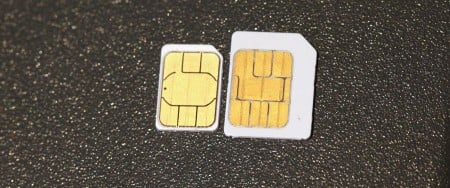Wondering if you should try cutting your micro-SIM or full-size SIM down to the new nano-SIM format used in the iPhone 5? Don’t bother, and we’ll tell you why, with several close up photos showing just how close the edges are.
When the iPhone 5 was announced, it heralded the introduction of a new type of SIM.
This smaller SIM card would still hold all of the necessary information allowing you to connect to your network, but could mean manufacturers can change the internal design and make the products smaller and thinner than ever before.

Owners of the new iPhone 5 will be the first to experience this, with September 21 the first day customers can get their hands on the new device.
They will, of course, need to jump over to a new SIM in order to use the product, meaning they’ll either have to sign up for a new plan or hope their telco lets them jump ship without paying much.
Previously, Australian telcos have allowed customers to switch from a full SIM to a micro SIM for free, so we don’t expect this to change dramatically.
But if you’re planning to buy an iPhone 5 outright, you might not want to walk into a Telstra, Optus, Vodafone, or Virgin shop, and may try your hand at cutting your SIM down to size to fit in the new phone.
We’re here to tell you that you shouldn’t. Seriously, just don’t try.
It’s not just a matter of trimming the edges, which as you can see from our shots, show a painfully close border, but it’s also the thickness.

There’s a slight difference in density, meaning you’ll have to attempt sanding the SIM back if you want to get it in.

Cutting down to the nano SIM dimensions and trying to sand away the thickness both could lead to problems, especially if you damage your SIM.
If that happens, no one will be able to help you out, leaving you without a functional SIM and forcing you to a telco’s store anyway, which is where you should be heading if you’re planning on making the shift to a nano SIM-based device like the iPhone 5.










WHO DOESNT HAVE TWO BUCKS FOR A NEW SIM, HOW CHEAP DO YOU WANT TO GO?
It costs $30+ on my side though. Just to switch to a nano sim.